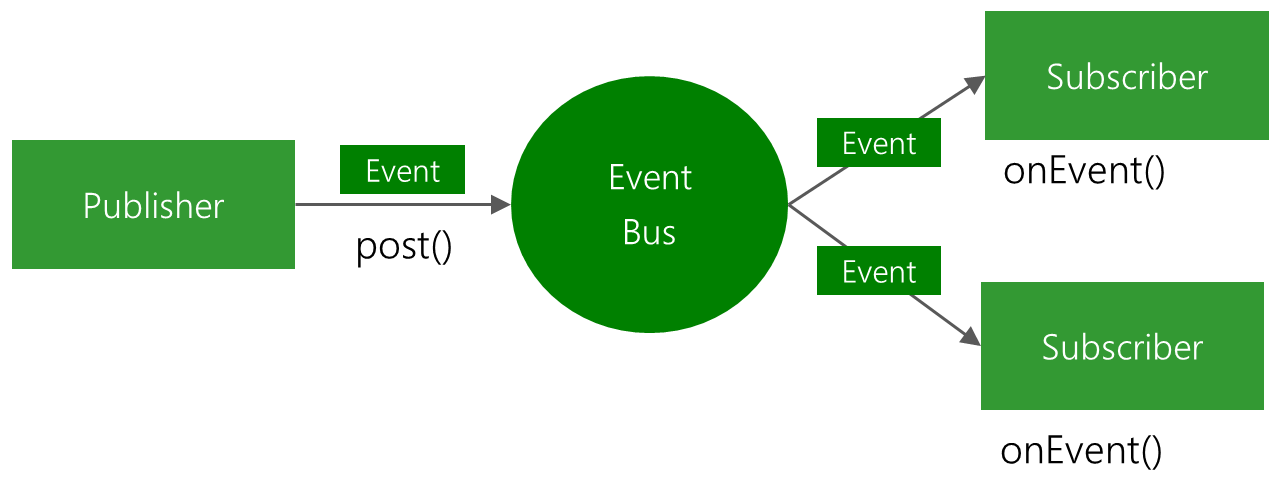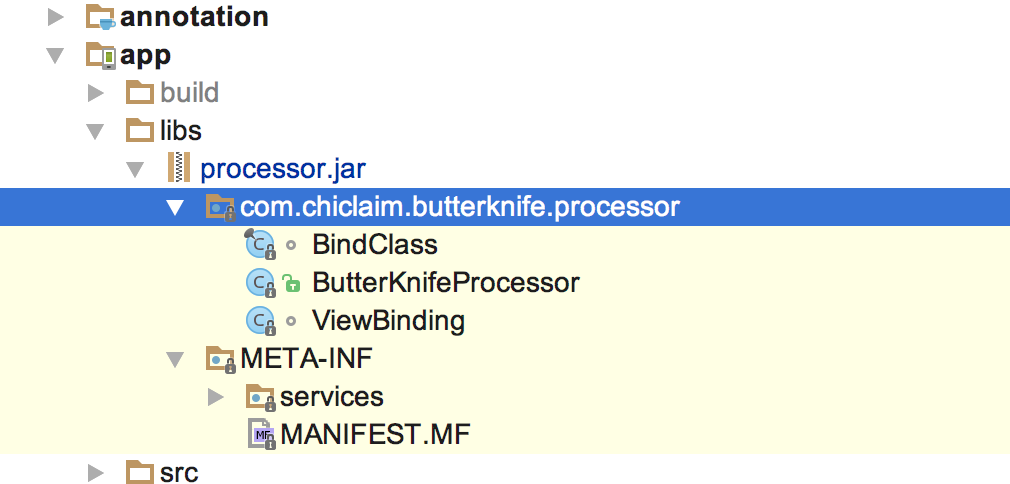編輯:關於Android編程
函數
函數被反射到位於project_root/gen/package/name/ScriptC_renderscript_filename的腳本類中。例如,如果在Renderscript代碼中聲明了以下函數:
void touch(float x, float y, float pressure, int id) {
if (id >= 10) {
return;
}
touchPos[id].x = x;
touchPos[id].y = y;
touchPressure[id] = pressure;
}
那麼將會在對應的腳本類中自動生產以下代碼:
public void invoke_touch(float x, float y, float pressure, int id) {
FieldPacker touch_fp = new FieldPacker(16);
touch_fp.addF32(x);
touch_fp.addF32(y);
touch_fp.addF32(pressure);
touch_fp.addI32(id);
invoke(mExportFuncIdx_touch, touch_fp);
}
函數不能有返回值,因為Renderscript系統被設計成異步的。當Android框架代碼調用進入Renderscript時,該調用會被放到隊列中,並在可能的時候才會被執行。這種限制允許Renderscript系統執行沒有固定中斷的功能,並提高效率。如果函數允許有返回值,那麼調用將會被阻塞,一直到該函數被返回。
如果想要讓Renderscript代碼給Android框架返回一個值,請使用rsSendToClient()函數。
變量
被支持的變量類型會反射到位於project_root/gen/package/name/ScriptC_renderscript_filename的腳本類中,同時會給每個變量生成一組訪問器方法。例如,如果在Renderscript代碼中聲明了以下變量:
uint32_t unsignedInteger=1;
那麼就會生成下列代碼:
privatelong mExportVar_unsignedInteger;publicvoid set_unsignedInteger(long v){ mExportVar_unsignedInteger = v; setVar(mExportVarIdx_unsignedInteger, v);} publiclong get_unsignedInteger(){ return mExportVar_unsignedInteger;}結構(Structs)
結構會被反射成一個它自己的類,位於<project_root>/gen/com/example/renderscript/ScriptField_struct_name中,該類代表了一個struct數組,並允許給結果成員分配內存。例如,如果聲明了以下結構:
typedef struct Point {
float2 position;
float size;
} Point_t;
那麼在ScriptField_Pont.java中會生成以下代碼:
package com.example.android.rs.hellocompute;
import android.renderscript.*;
import android.content.res.Resources;
/**
* @hide
*/
public class ScriptField_Point extends android.renderscript.Script.FieldBase {
static public class Item {
public static final int sizeof = 12;
Float2 position;
float size;
Item() {
position = new Float2();
}
}
private Item mItemArray[];
private FieldPacker mIOBuffer;
public static Element createElement(RenderScript rs) {
Element.Builder eb = new Element.Builder(rs);
eb.add(Element.F32_2(rs), "position");
eb.add(Element.F32(rs), "size");
return eb.create();
}
public ScriptField_Point(RenderScript rs, int count) {
mItemArray = null;
mIOBuffer = null;
mElement = createElement(rs);
init(rs, count);
}
public ScriptField_Point(RenderScript rs, int count, int usages) {
mItemArray = null;
mIOBuffer = null;
mElement = createElement(rs);
init(rs, count, usages);
}
private void copyToArray(Item i, int index) {
if (mIOBuffer == null) mIOBuffer = new FieldPacker(Item.sizeof * getType().getX()/* count
*/);
mIOBuffer.reset(index * Item.sizeof);
mIOBuffer.addF32(i.position);
mIOBuffer.addF32(i.size);
}
public void set(Item i, int index, boolean copyNow) {
if (mItemArray == null) mItemArray = new Item[getType().getX() /* count */];
mItemArray[index] = i;
if (copyNow) {
copyToArray(i, index);
mAllocation.setFromFieldPacker(index, mIOBuffer);
}
}
public Item get(int index) {
if (mItemArray == null) return null;
return mItemArray[index];
}
public void set_position(int index, Float2 v, boolean copyNow) {
if (mIOBuffer == null) mIOBuffer = new FieldPacker(Item.sizeof * getType().getX()/* count */);
if (mItemArray == null) mItemArray = new Item[getType().getX() /* count */];
if (mItemArray[index] == null) mItemArray[index] = new Item();
mItemArray[index].position = v;
if (copyNow) {
mIOBuffer.reset(index * Item.sizeof);
mIOBuffer.addF32(v);
FieldPacker fp = new FieldPacker(8);
fp.addF32(v);
mAllocation.setFromFieldPacker(index, 0, fp);
}
}
public void set_size(int index, float v, boolean copyNow) {
if (mIOBuffer == null) mIOBuffer = new FieldPacker(Item.sizeof * getType().getX()/* count */);
if (mItemArray == null) mItemArray = new Item[getType().getX() /* count */];
if (mItemArray[index] == null) mItemArray[index] = new Item();
mItemArray[index].size = v;
if (copyNow) {
mIOBuffer.reset(index * Item.sizeof + 8);
mIOBuffer.addF32(v);
FieldPacker fp = new FieldPacker(4);
fp.addF32(v);
mAllocation.setFromFieldPacker(index, 1, fp);
}
}
public Float2 get_position(int index) {
if (mItemArray == null) return null;
return mItemArray[index].position;
}
public float get_size(int index) {
if (mItemArray == null) return 0;
return mItemArray[index].size;
}
public void copyAll() {
for (int ct = 0; ct < mItemArray.length; ct++) copyToArray(mItemArray[ct], ct);
mAllocation.setFromFieldPacker(0, mIOBuffer);
}
public void resize(int newSize) {
if (mItemArray != null) {
int oldSize = mItemArray.length;
int copySize = Math.min(oldSize, newSize);
if (newSize == oldSize) return;
Item ni[] = new Item[newSize];
System.arraycopy(mItemArray, 0, ni, 0, copySize);
mItemArray = ni;
}
mAllocation.resize(newSize);
if (mIOBuffer != null) mIOBuffer = new FieldPacker(Item.sizeof * getType().getX()/* count */);
}
}
提供給你的這些生產的代碼能夠方便的把內存分配給由Renderscript運行時所請求的結構,並能夠與內存中的這些結構進行交互。每個結構類都定義了以下的方法和構造器:
1. 被重載的構造器允許用來分配內存。ScriptField_struct_name(Renderscript rs, int count)構造器允許用count參數來定義想要分配內存的結構體的數量。ScriptField_struct_name(RenderScript rs, int count, int usages)定義了一個額外的參數:usages,這個參數用來指定該內存所匹配的內存空間,共有四種內存空間的可能:
A.USAGE_SCRIPT:在腳本的內存空間中來分配。如果沒有指定內存空間,這是默認的內存空間。
B.USAGE_GRAPHICS_TEXTURE:在GPU的紋理內存空間中進行分配。
C.USAGE_GRAPHICS_VERTEX:在GPU的Vertex內存空間中進行分配。
D.USAGE_GRAPHICS_CONSTANTS:在GPU的固定內存空間中進行分配,被分配的空間有不同的程序對象來使用。
通過OR操作符能夠指定多種內存空間。這樣做的用意是要告訴Renderscript運行時,你要訪問指定的內存空間中的數據。下面的例子在腳本和Vertex內存空間都給定制的數據類型分配了內存:
ScriptField_Point touchPoints =newScriptField_Point(myRenderscript,2,Allocation.USAGE_SCRIPT |Allocation.USAGE_GRAPHICS_VERTEX);2. 一個靜態的嵌套類:Item,該類允許用對象的形式來創建一個struct的實例。如果要讓struct在你的Android代碼中更好的工作,那麼這個嵌套類就會發揮作用。當完成對象的操作時,通過調用set(Item I, int index, boolean copyNow)方法,能夠把該對象放到被分配的內存中,並且把Item設置到數組中期望的位置。對於最新寫入的內存,Renderscript運行時能夠自動的訪問。
3. 結構體中的每個字段都有獲取和設置值的訪問器方法。這些訪問器的每個方法都會有一個index參數來指定要讀寫的數組中結構體。每個setter方法還有一個copyNow參數,它指定是否要把該內存立即同步給Renderscript運行時。要同步那些尚未同步的內存,請調用copyAll()方法。www.2cto.com
4. createElement()方法創建一個內存中結構體的說明。該說明被用於把內存分配給其所代表的內存。
5. resize()方法工作很想C語言中reallc()方法,它允許你擴展之前分配的內存空間,並在該內存空間中保持之前創建的值。
6. copyAll()方法把在框架層設置的內存同步到Renderscript運行時。在調用一個成員的set方法時,能夠指定一個布爾型的copyNow參數,該參數是true時,說明調用該法時需要同步內存。如果指定為false,你能夠調用copyAll()方法,把所有屬性的尚未同步的內存與Renderscript運行時同步。
作者:FireOfStar
 Android 從底部彈出Dialog(橫向滿屏)的實例代碼
Android 從底部彈出Dialog(橫向滿屏)的實例代碼
項目中經常需要底部彈出框,這裡我整理一下其中我用的比較順手的一個方式(底部彈出一個橫向滿屏的dialog)。效果圖如下所示(只顯示關鍵部分):步驟如下所示:1.定義一個d
 Android中AlertDialog的使用
Android中AlertDialog的使用
AlertDialog的簡單使用 AlertDialog的使用是依賴於Activity的。它不同於Toast,Toast是不依賴於Activity的,Toast只起到一
 Android事件總線分發庫EventBus3.0的簡單講解與實踐
Android事件總線分發庫EventBus3.0的簡單講解與實踐
導語,EventBus大家應該不陌生,EventBus是一款針對Android優化的發布/訂閱事件總線。主要功能是替代Intent,Handler,Broa
 Android開發之手把手教你寫ButterKnife框架(二)
Android開發之手把手教你寫ButterKnife框架(二)
一、新建個項目, 然後創建一個module名叫processor新建module的時候一定要選擇 Java Library 否則在後面會找不到AbstractProces